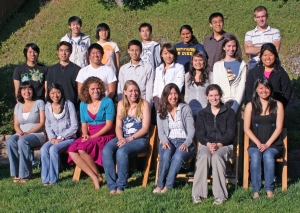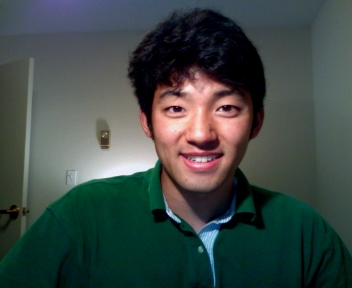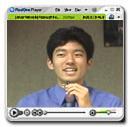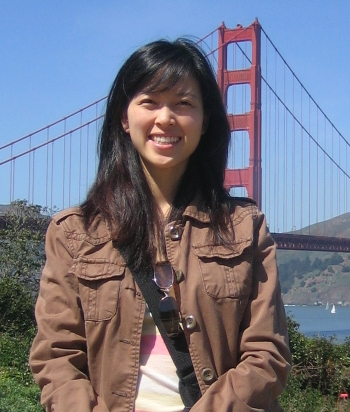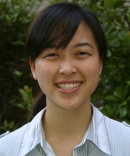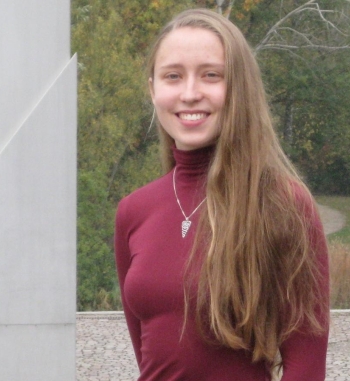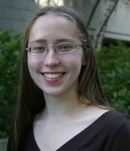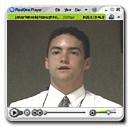Early Alums of Pacific Rim Cyberinfrastructure Undergraduate Program Reflect Back To Find the Future
|
San Diego, CA, October 29, 2008 -- Four UC San Diego alums were asked recently to reflect on their experiences in the PRIME program and how it helped to shape who and where they are today. All are thrilled to have been part of this research abroad program and grateful for the scientific, educational and cultural opportunities it gave them.
The Pacific Rim Experiences for Undergraduates (PRIME) program provides undergraduates with the opportunity of doing real research while living for nine weeks in one of several Pacific Rim countries, working with mentors at both the host institution and at UC San Diego.
"We are immersing the students in both scientific research and a new culture," explains Gabriele Wienhausen, the principal investigator (PI) of PRIME, "By providing them with experiential training in both the conduct of research and in the international global workplace." Wienhausen is the associate dean of education for the UC San Diego division of Biological Sciences.
|
During the five years of the PRIME program, more than 70 students have participated. Based on feedback from the students each year, the program has been adapted and improved each successive year.
"This year we wanted to find out from some of our early students," says Peter Arzberger, PRIME coPI, "What they think about PRIME now, several years after they participated, and how they feel the experience has affected them."
Today, Robert Ikeda (PRIME 2004) is a third-year doctoral student studying computer science at Stanford University. "Before PRIME, I did not know much about computer science," he says, "But afterwards, I was encouraged to learn more, and I eventually decided to pursue a Ph.D. PRIME was my first opportunity to work on a serious software project, and I am thankful for how it has helped shape my academic interests."
|
While at the National Center for High-performance Computing (NCHC) in Hsinchu, Taiwan, Ikeda pursued the development of a graphical user interface for pathway editing and integration in Cytoscape, a bioinformatics software platform for visualizing molecular interaction networks and integrating them with gene expression profiles. This was for large-scale, computer-aided models of biological signaling and regulatory pathways.
When he returned to UC San Diego for his junior year, he kept his electrical engineering major and took computer science courses as electives. The cultural aspect of PRIME was even more significant for him.
"The biggest effect of the program is that now I am more open-minded and aware and appreciative of the world's cultures," he explains, "I still have a lot to learn, but visiting Taiwan made me realize that there is a whole world outside of the United States. I think my willingness to be open-minded and attentive was why I had such a good time. The people I met were welcoming and made me feel like I had a story to share as well. My summer in Taiwan was my most memorable."
|
Shirley Lee (PRIME 2005), also went to Taiwan, one year later, after hearing about PRIME from Takumi (PRIME 2004) who had gone to Japan and was doing undergrad research in the same lab as Lee. "The most significant aspect of participating in the program was the impact on my personal life," says Lee, "Born and raised in California, there was a disconnect between myself and my siblings, with our parents who had grown up in Taiwan," she adds, "Spending ten weeks in the country of my parents and grandparents, I came to understand my family better, which really is to understand myself better."
While at NCHC, Lee, a bioengineering junior, also worked with Cytoscape, as had Ikeda; she used it to visualize internet connectivity. Both Ikeda and Lee worked with advisors Fang-Pang Lin, NCHC's Grid Computing division manager and Trey Ideker, a bioengineering assistant professor at UC San Diego.
|
"The program made me realize how software solutions can evolutionize or revolutionize most, if not all, industries," Lee adds, "If you initially spend the time required to create the program, you can save a lot of time in the long run. Currently, I am in the medical device industry which is documentation-intensive. Already, I see how software solutions are transforming my everyday work environment for the better." Lee has been a quality engineer at Abbott Vascular for over two years. She analyzes and manages risk to patients by implementing statistically-based sampling plans to ensure product quality.
Lee also looks at the world differently because of her PRIME experience; she explains, "It showed me that there is literally a world of opportunities for people who want to collaborate with others around the globe and work towards achieving a common goal. I now feel comfortable and open to the idea of living and working outside of the United States."
|
Laura Berstis (PRIME 2005) has put that insight into action. She is living abroad, as a graduate student at the University of Zurich, currently finishing her master's degree on the way to beginning her formal Ph.D. program in theoretical computational chemistry. She is working with her advisor, Kim Baldridge, to whom she was introduced via the PRIME program. Berstis worked on computational biology tools while at Monash University in Australia, with David Abramson and Baldridge (who is also a professor at UC San Diego) as her mentors. Berstis' master's thesis project involves computational studies of the interactions and differences between small molecular nucleic acid systems. She expects it to be completed at the end of the year, so she can begin her doctoral work in January.
What Laura said in 2005. Before leaving for Monash, the then 20-year-old sophomore and aspiring bioengineer said: "I applied to PRIME because I wanted to experience different avenues of research and in general to explore possibilities for what I want to dedicate my life to." She was one of the few sophomores accepted into the PRIME program at that time.
|
What she says now: "It may sound 'cheesy' said so bluntly, yet it couldn't be more true-- the PRIME program truly changed my life!"
"The PRIME program definitely had a major impact on me, and my future academic choices. I had a fantastic experience working in Australia on my project," she explains, "And, I continued working on projects during my final years at UCSD, including coming to Zurich for a second academic internship position. When it came time to apply to graduate schools, I was also considering medical school and pursuing an M.D.-Ph.D. degree as my next step. However, I found that the opportunity to move to Zurich and work with Kim was another incredible chance, as with the PRIME program, to again explore a significantly different location, culture, and to simultaneously further my scientific/academic career, and expose myself to a new environment, learn a new language, and learn from the lessons and hurdles experienced when living abroad for a longer period of time."
|
When it came time for choosing graduate schools, John Colby (2004) opted for the M.D.-Ph.D. program and is now in his third year (of eight overall) at UCLA. He is pursuing the Ph.D. in biomedical engineering, with a specialization in neuroengineering. His thesis is in developmental neuroimaging. Before beginning medical school at UCLA, Colby worked for a year in industry at SAIC in La Jolla, where we worked with a group to develop biosensors.
Colby also went to Monash University with PRIME and had Abramson as his host advisor; his UC San Diego advisor was Anushka Michailova, a senior research scientist in Andrew McCulloch's Cardiac Mechanics Research Group lab. Using NIMROD (a family of tools developed by David Abramson and his group), Colby optimized the cardiac ventricular myocyte developed by Michailova and McCulloch. He was able to identify parameters that improved model stability and its agreement with experimental data in normal conditions and during metabolic inhibition. "I remember my first student [Colby]," recalls Michailova, "He was so excited with this program." He still is.
"Without question, PRIME was the most influential experience I had during my time as an undergraduate at UCSD," states Colby, "The foundation of knowledge in high performance computing that I acquired through PRIME is something that I have continued to use everyday in my research career - whether it be modeling mass spectrometry signals or distributing a computationally challenging MRI analysis across a cluster environment. I have no doubts that this will continue to be true in the future as well, as complex computational and informatics problems continue to be become more and more important to diverse fields of biomedical research.
|
"Still, to me, the most significant aspect of the program was the first-hand experience it delivered in planning and leading a research collaboration. This type of training is integral for the coming generations of scientists and clinicians, who must navigate an ever more specialized and collaborative research environment," adds Colby, "And the fact that all of this was done literally thousands of miles away from UCSD, our friends, and home mentors, simply cannot be understated. Not only did this jump start our leadership role in the collaboration, but it also helped us to develop an independent problem solving mentality that is beneficial to a career in science - and for that matter - daily life. Because these collaborations were developed at the international level, PRIME also gave us an invaluable opportunity, and one that is exceedingly rare for undergraduates in science and engineering, to experience another culture through a study-abroad type program in another country."
|
Berstis summarizes both the past experience with PRIME and the future, when she says, "My German is definitely improving; and with this I feel quite liberated, knowing that I could move to practically any country in the world, learn a new language and culture, and still thrive. In a way it makes the world feel so much more interconnected, as it truly is, in terms of research collaborations, cultural interactions, and also physically without such distinct national borders appearing as barriers anymore."
PRIME is funded by the National Science Foundation (NSF, INT 0407508), with additional support from the UC San Diego division of Calit2, the National Biomedical Computation Resource, the Telemedicine and Advanced Technology Research Center, the Gordon and Betty Moore Foundation, partner and host institutions.
Related Links

